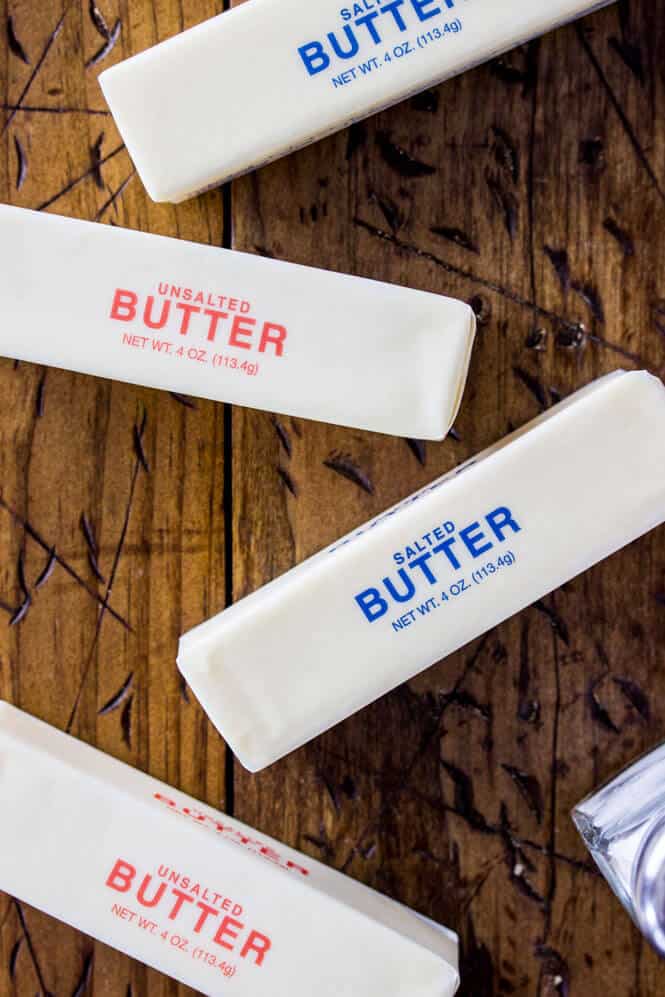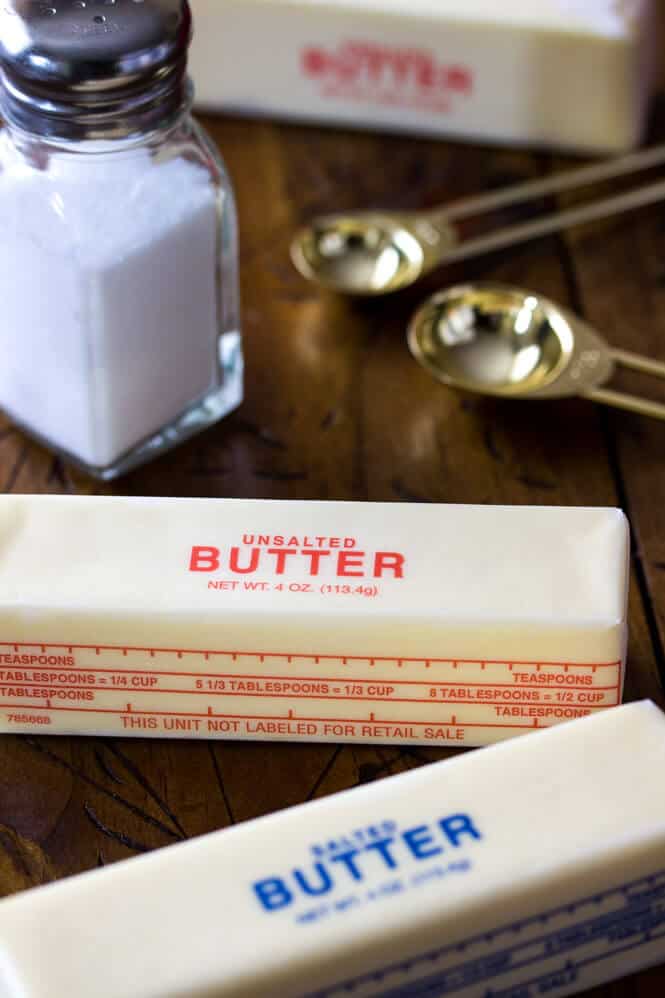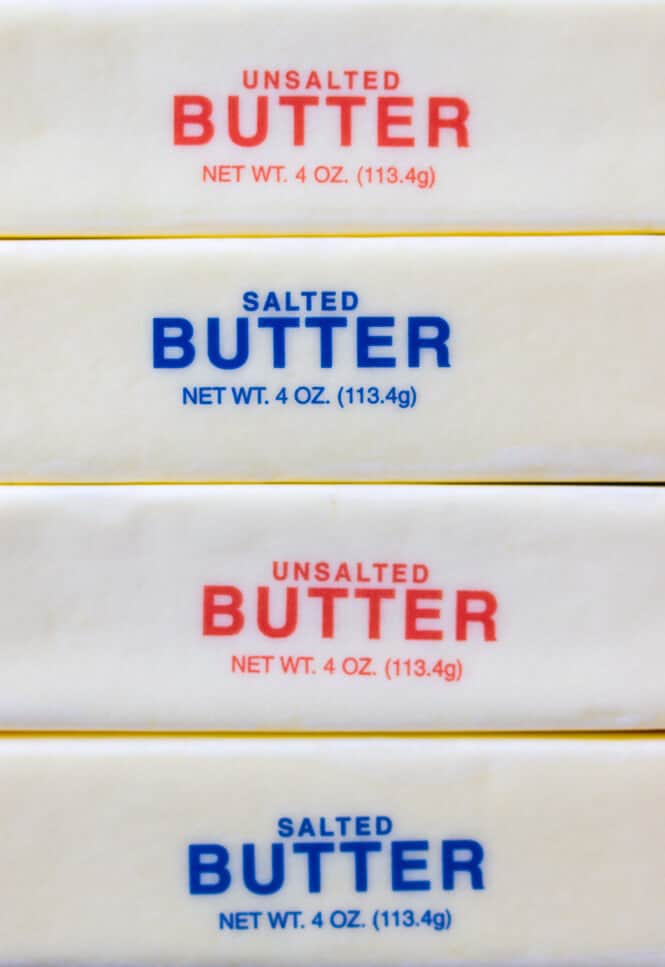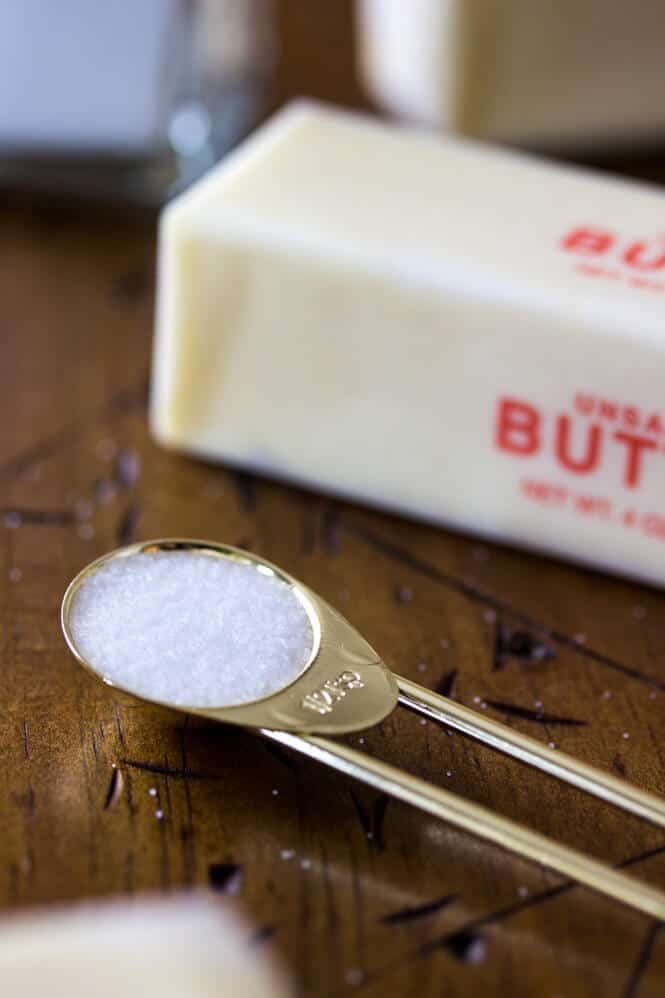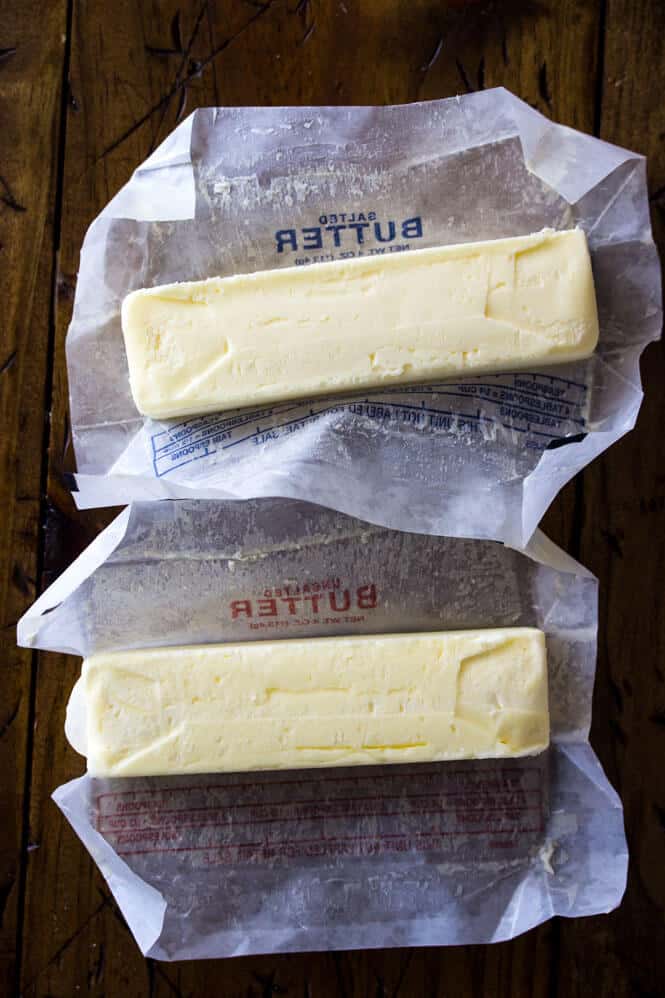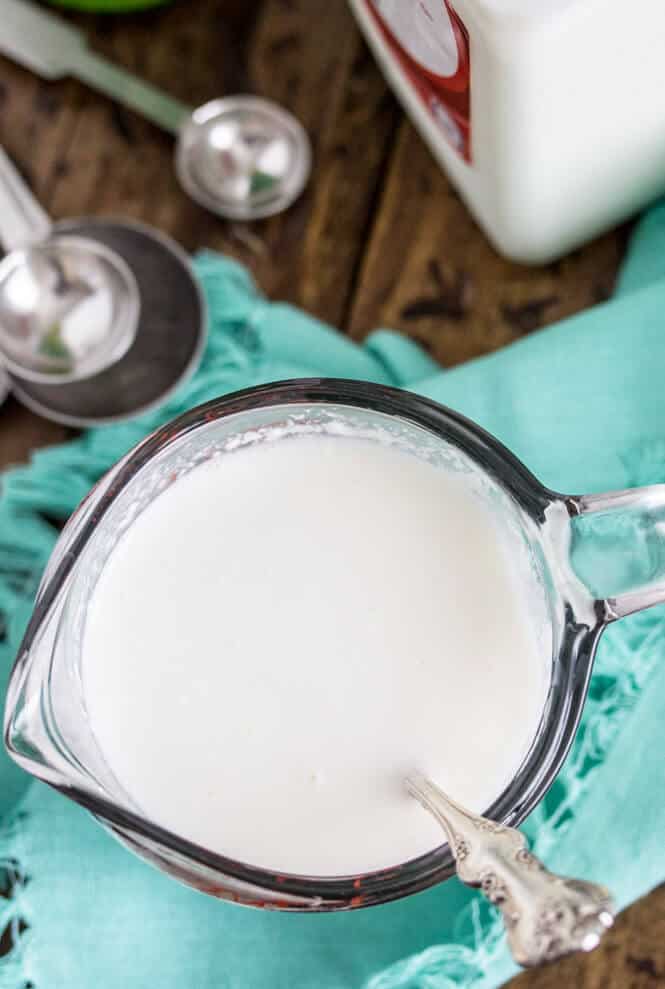Today I want to talk about the differences in salted and unsalted butter, substitutions you can make if you only have one kind on hand (and it’s not the kind your recipe calls for), and why some recipes call for one type of butter over the other.
Until about two years ago, my inclination when baking was to always reach for the salted butter, no matter what the recipe said. More salt = more flavor, right? Well, no, not necessarily. In fact, in nearly all of my recipes that I share here, I specifically call for unsalted butter. So why is that? Well, there are several reasons, so, if you don’t mind reading over 500 words about my favorite fat, let’s discuss.
If you’re buttering toast or nestling a big hunk of butter on top of some steaming hot pancakes, you’re going to want to go with the salted butter, that will give you the best flavor in these situations. However, when you’re baking, it’s a whole different story because we want to be able to control the amount of salt that we’re adding to our cupcakes, cookies, cakes, etc. And that’s what it all boils down to: The reason that most baking recipes call for unsalted butter is because of the need for control. When you use salted butter, it is very difficult (impossible?) to know for sure how much salt is being added to the recipe by way of the stick of butter. Different brands use different amounts of salt in their butter, so unfortunately, you lose all of your control and run the risk of over-salting your recipe.
As a recipe developer, I put a ton of time into making the recipes that I share just right. I’ve optimized every ingredient with the goal of giving you the best flavor possible. Most other recipes that you’ll find across Pinterest and the web are fine-tuned the same exact way. So, if a recipe calls for unsalted butter and a half teaspoon of salt, but you use salted butter and a half teaspoon of salt, you’re going to have a saltier dish than the recipe was actually designed for. Not more flavorful, but actually a worse result. Carefully following what is called for in the recipe is the best way to ensure that you will get the best results possible Unsalted butter is generally believed to also be fresher than salted butter. The reason behind this is that since salt is a preservative, salted butter can be stored longer and may be older than your unsalted butter. In fact, it could actually be bad, or approaching going bad, but the quality would be masked by the salt. For the best, freshest, flavor in baking, always use unsalted butter.
But let’s say you’re set to bake some cookies, the recipe calls for unsalted butter, but you only have salted on hand. You’re already in your comfy pants after a long day at work and not about to run back out to the store, so what can you do? While unsalted butter is always preferred when called for, there is a substitution: my general rule of thumb is to decrease the amount of salt that the recipe calls for by ½ teaspoon per cup of butter. For example, if a recipe calls for 1 cup (or two sticks, or 227g for you metric users) of unsalted butter and 1 teaspoon salt, I would use 1 cup of salted butter and only ½ teaspoon of salt. If the recipe called for 1 cup of unsalted butter and ½ teaspoon salt, I would omit the salt entirely. That’s ¼ teaspoon of salt per stick (113g) of butter. Ideally, you want to use what the recipe calls for, but this subtle variation has never steered me wrong in the past.
It’s less common that you’ll find a recipe that calls for salted butter when you only have unsalted on hand, but if you do, just apply the above steps backwards. That is: for every 1 cup of salted butter that the recipe calls for, use 1 cup unsalted butter and ½ teaspoon salt, instead. Super simple stuff, huh?
Ok so that’s it for today. In summary:
Use the salt that the recipe calls for, when possible. Unsalted butter is most often used to give you more control over the salt content of the recipe and to maximize freshness and flavor without making your baked goods overly salty. If you only have salted butter and the recipe calls for unsalted, reduce the salt called for in the recipe by ½ teaspoon per cup of butter called for. This isn’t an exact science (remember, we aren’t sure how much salt is actually in salted butter), but it will produce best results.
Are there any other kitchen questions that you have that you’d like me to write about next? I have a few more planned but I’m happy to receive any suggestions!
Other Kitchen Tips:
Easy Buttermilk Substitute
